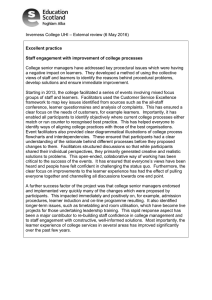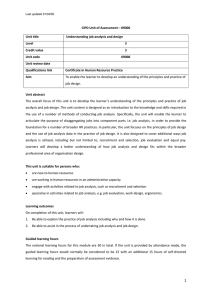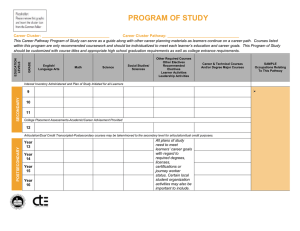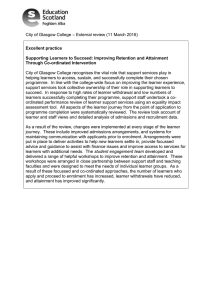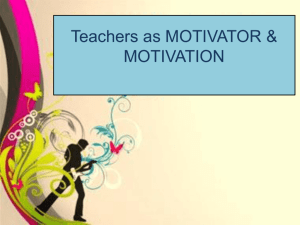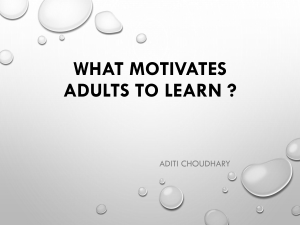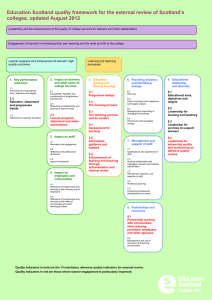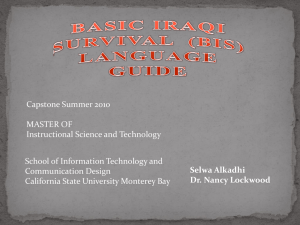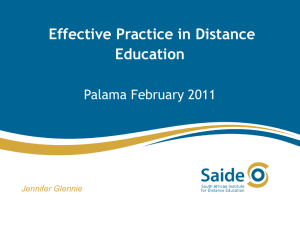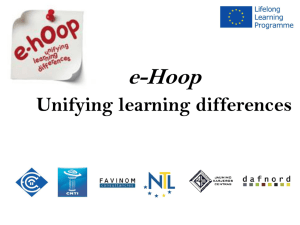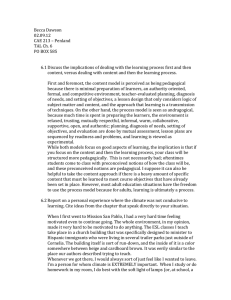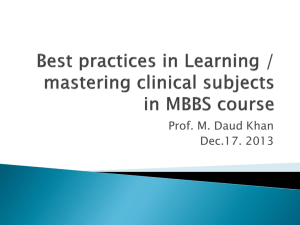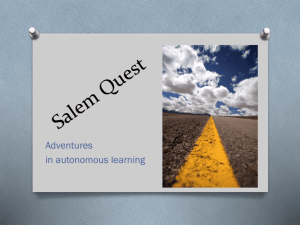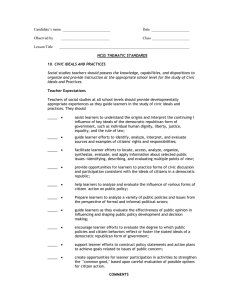Chapter 8 - Jacynthe.Latoile
advertisement
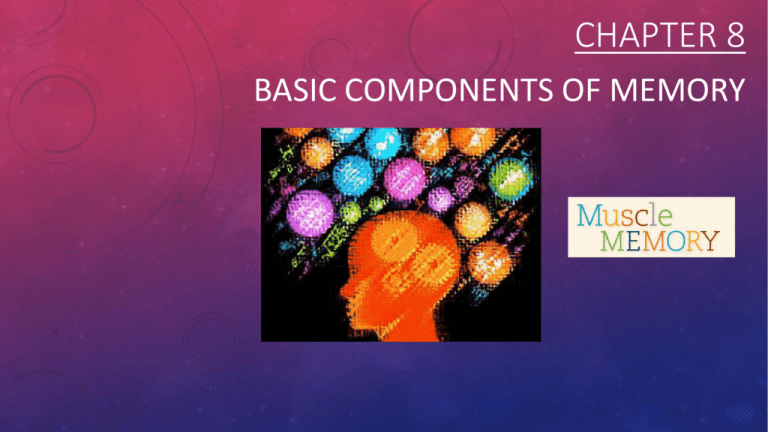
CHAPTER 8 BASIC COMPONENTS OF MEMORY BASIC TERMINOLOGY Process of putting new information in memory MEMORY Ability to recall previously learned information STORAGE There are three main ways in which information can be encoded (changed): 1. Visual (picture) Process of storing information by modifying it ENCODING 2. Acoustic (sound) 3. Semantic (meaning) RETRIEVAL Process of « finding » information previously stored DUAL-STORE MODEL OF MEMORY ATKINSON-SHIFFRIN (1968) CENTRAL EXECUTIVE INPUT Sensory Register ATTENTION Working (Short-Term) Memory IN DEPT PROCESSING Long-Term Memory SENSORY REGISTER Very large even for infants Hold incoming information long enough for it to undergo very preliminary cognitive processing. CAPACITY Basically stored in the same way in which it has been sensed FORMS OF STORAGE Very Brief Diffucult to measure Move to quickly to working memory DURATION -Interference -Decay FACTORS INFLUENCING ATTENTION INFORMATION THAT A LEARNER PAYS ATTENTION TO-MOVES ON TO WORKING MEMORY MOTION stationery ones Moving objects are more likely to capture attention than SIZE Attention to drawn to LARGE OBJECTS INTENSITY More intense Stimuli- Bright Colors & Loud Noises NOVELTY Stimuli unusual in some way INCONGRUITY Objects that don’t make sense within their context SOCIAL CUES Things they see others looking at and reacting to EMOTION Stimuli with strong emotional connections PERSONAL SIGNIFICANCE Meaning and relevance people find in an object or event NATURE OF ATTENTION Shadowing Technique used to study this ability to attends to a spoken message while ignoring others. Is Attention really a filter ? Working memory controls attention to some extent http://youtu.be/tESffhWs8l0 ATTENTION’S LIMITED CAPACITY WORKING MEMORY WHERE, COGNITIVE- ACTIVE THINKING, OCCURS Very limited CAPACITY A good deal of the information stored in working memory is auditory especially when the information is language-based ( visual, spatial and tactile) Controls and monitors the flow and use of information throughout the memory system FORMS OF STORAGE George Miller (1956) Magical number seven, plus or minus two Cowan ( 2010) 3-5 meaningful items Short-term memory Less than 30 seconds DURATION http://education-portal.com/academy/lesson/improving-short-term-memory.html#lesson -Interference -Decay LONG-TERM MEMORY Declarative Procedural knowledge knowledge How things are, were, or will be How to do things CONNECTING NEW INFORMATION WITH PRIOR KNOWLEDGE Illimited More information is already there, the easier it is to store additional information CAPACITY In a variety of forms: Distorstions of reality Explicit knowledge Implicit knowledge Easily recall and explain it Affect people’s behavior (Chapter 10) FORMS OF STORAGE Learner would be actively involved in storing virtually anything in long term memory Permanent state Forgetting is retrieval Still an open question… DURATION Some kinds of information - once they’ve captured a person’s attentionseem to be automatically stored in the long-term memory. ALTERNATIVE VIEWS OF HUMAN MEMORY Levels-of processing Activation (Cermak & Craik 1979) (Campo and Al. 2005) All information is in an active or an inactive state Both, new information and previously stored one, is whatever a learner is paying attention to and processing. Intention to learn • • • • • Labels Sentence generation Sentence repetition « What » question. « Why » question. Incidental learning Quite useful in understanding how people retrieve information from long-term memory • Depth of processing-not intention to learn- was the critical factor affecting learning GENERALISATIONS ABOUT MEMORY/ EDUCATIONAL IMPLICATIONS • Attention is essential for explicit memory • Effective Strategies for capturing and holding students’s attention: 1. Include variety in topics and presentation styles 2. Provide frequent breaks from task requiring considerable attention and concentration 3. Ask questions 4. Minimize distractions when independent work is assigned 5. Seat the students near the teacher if they have trouble staying on task 6. Monitor students’ behaviors Learners can process only a limited amount of information at a time Learners must be selective about what they choose to study and learn Even with attention-guetting and appropriately paced instruction and activities, learners differ in their ability to control what they attend and consciously think about The limited capacity of working memory isn’t necessarily a bad thing GROUP DISCUSSION Try to imagine life without memories. We would have no identity. We would ask the same questions over and over because we would not be able to remember the answers to them. We would live forever in the present moment and have no recollection of our pasts, including people and experiences that are important to us, and no anticipation of the future. Glenda Thorne, Ph.D. Memory and Learning. http://www.cdl.org/resource-library/articles/memory.php What children remember is more often than not used as the yardstick to judge what they have learned. If they perform poorly on a test because they can't retrieve what they know from long-term memory in order to answer test questions, the assumption usually is that learning has not taken place. What do you think about that ? Furthermore; what is the best way to use memory for learning ?








